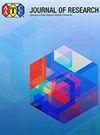Investigation of Mordant Application in Reactive Dyeing of Nylon Fabrics
IF 1.2
4区 工程技术
Q4 MATERIALS SCIENCE, TEXTILES
引用次数: 0
Abstract
Nylon fibers were the first synthetic fibers to be produced on an industrial scale, and they are one of the most consumed synthetic fibers due to their visual and usage properties. Reactive dyes have been commercially produced since the mid-20th century, and they are mostly preferred in dyeing cellulosic fibers. The most important property of reactive dyes is their ability to make covalent bonds within the fiber. Mordants are used mainly in the application of natural dyes to hold and retain the dye molecules in the fiber. In this paper, nylon fabrics were dyed with three reactive dyes having different reactive groups (monochlorotiazine, trifluoropyrimidine and monochlorotriazine/vinylsulfone) in the presence of three chemical mordants (iron (II) sulfate, potassium aluminum sulfate and tannic acid) to obtain better exhaustion and coloration properties. Pre-mordanting, meta-mordanting, and post-mordanting processes were used for dyeing. The dyeings were performed at two dyeing concentrations (0.5% and 2% owf), and at three pH levels (pH 2, 4, and 6). The percentage of dyebath exhaustion (%E), the percentage fixation of the dye which exhausted (%F) and the overall percentage fixation (%T) were calculated after pyridine extraction. Wash and light fastness tests were applied on the dyed samples. The results were discussed via %E, %T and CIELAB color differences (ΔEab*). The results revealed that mordant usage improved the coloration properties of reactive dyes on nylon fabrics. The %E and %T results changed according to the independent variations of pH level, mordant chemical and mordanting method. The correct pH level and mordanting method gave the best dyeing and fastness results for the dyes under test.丝光剂在尼龙织物活性染色中的应用研究
尼龙纤维是第一种以工业规模生产的合成纤维,由于其视觉和使用性能,它们是消费量最大的合成纤维之一。活性染料自20世纪中期以来一直在商业上生产,它们大多是纤维素纤维染色的首选。活性染料最重要的特性是它们在纤维内形成共价键的能力。Mordants主要用于天然染料的应用,以保持和保留纤维中的染料分子。本文采用三种不同活性基团的活性染料(一氯噻嗪、三氟嘧啶和一氯三嗪/乙烯基砜),在三种化学媒染剂(硫酸铁、硫酸钾、硫酸铝和单宁酸)的存在下对尼龙织物进行染色,以获得较好的吸光性和显色性。染色采用预媒染、中间媒染和后媒染工艺。在两种染色浓度(0.5%和2%owf)和三种pH水平(pH 2、4和6)下进行染色。计算吡啶萃取后的染浴消耗百分比(%E)、消耗的染料的固定百分比(%F)和总固定百分比(%T)。对染色样品进行了洗涤牢度和耐光牢度试验。通过%E、%T和CIELAB色差(ΔEab*)讨论了结果。结果表明,媒染剂的使用提高了活性染料在尼龙织物上的着色性能。%E和%T结果随pH值、媒介化学和媒介方法的独立变化而变化。正确的pH值和媒染方法对所测染料的染色效果和牢度最好。
本文章由计算机程序翻译,如有差异,请以英文原文为准。
求助全文
约1分钟内获得全文
求助全文
来源期刊

AATCC Journal of Research
MATERIALS SCIENCE, TEXTILES-
CiteScore
1.30
自引率
0.00%
发文量
34
期刊介绍:
AATCC Journal of Research. This textile research journal has a broad scope: from advanced materials, fibers, and textile and polymer chemistry, to color science, apparel design, and sustainability.
Now indexed by Science Citation Index Extended (SCIE) and discoverable in the Clarivate Analytics Web of Science Core Collection! The Journal’s impact factor is available in Journal Citation Reports.
 求助内容:
求助内容: 应助结果提醒方式:
应助结果提醒方式:


